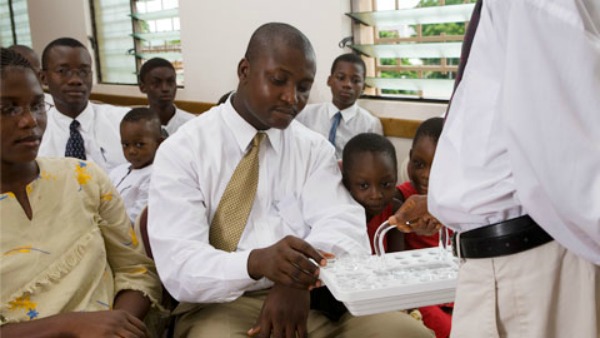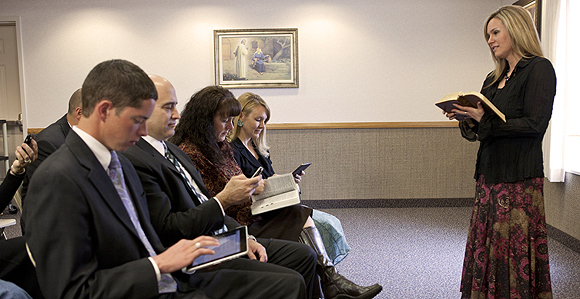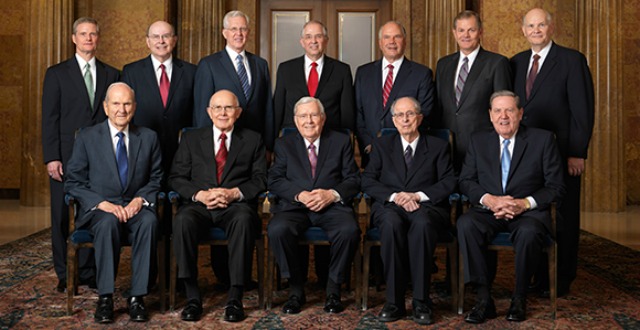Question
Gramps,
What can you tell me about the history of Sacrament Meetings in the early restored church? When did it become a practice to have members invited or assigned to give talks in Sacrament meeting? Was it always the case? I am a branch president of a small branch and assigning and inviting others to share the of speaking is one of the biggest challenges at times.
Sean
Answer
Hello Sean,
Thank you for your question. Before I share my thoughts related to your question, let me thank you for serving as a Branch President and doing your part to help build up the Saints in your area of the world. May our Father in Heaven bless you and your Branch for your faithful efforts.
The people who have been asked to speak in Sacrament Meeting over the years has changed throughout Church History. In early Church history, Sabbath services were sometimes held in homes, schools and most frequently, due to the size of the congregations and a lack of larger buildings, were held outdoors. Through most of early Church History, the division of Saints into Wards did not exist, but rather the Saints met in one large community group instead.
As published in the Ensign Jan 1978 “Mormon Sundays:”
It was at Nauvoo that the first wards were created, but these were for tithing purposes, not for regular meeting purposes. Records do not show any ward sacrament meetings in Nauvoo, only the community-wide morning and afternoon meetings.
The community-wide meetings would number in the thousands, easily larger than most modern day Stake Conferences. In Nauvoo Joseph Smith said:
This morning I preached at the grove to about 8,000 people
As a side note, with such large numbers, the Sacrament was not always a weekly event.
The “Mormon Sundays” Ensign article states:
From 1850 to 1900 the Sabbath day in the Church changed a great deal. Meetinghouses for each ward made ward sacrament meetings and Sunday Schools possible for the first time. Holding local meetings in turn meant that more local members participated in Sabbath activities as class teachers and members, officers and sacrament administrators, speakers, prayer givers, and choir members. Special fast Sundays and quarterly stake conference Sundays were introduced.
Prior to these changes, and with large community congregations, the speaking was usually left to the General Church leadership to provide. This setting may have felt similar to attending a General Conference where General Authorities would speak but not those of the general membership. As the church began to divide itself into smaller groups (stakes, wards, branches) the responsibility to provide speakers began to flow down to the Church membership. Though the general membership was beginning to provide Sacrament speakers themselves, outside speakers like General Authorities and Home Missionaries (similar to High Councilors) would still visit frequently on speaking assignments.
“I am a branch president of a small branch and assigning and inviting others to share the responsibility of speaking is one of the biggest challenges at times.”
As a Branch President, with limited Branch members, you will face some unique challenges that perhaps a Bishop of a much larger ward would not. On the flip side, a Branch can often times offer it’s members a: faster, stronger, more personalized, one-on-one environment to spiritually grow and produce deep gospel roots. A small Branch can be an absolute blessing for many members, who might not otherwise flourish hidden in a large Ward membership. Branches offer this spiritual growth because basically everyone is involved. The members of a Branch may have 2-3 callings, unlike a large Ward where they may have only one or none at all. Some members are able to “hide” in their large ward and not speak in Sacrament for years, even decades. While hiding/avoiding speaking in Sacrament may seem ideal to some, you are actually “hiding/avoiding” from potential blessings and spiritual growth. A common theme that you might hear a sacrament speaker say is, “I really needed this talk and I feel that of everyone here today, I might get the most out of it.” This sentiment is absolutely true for many! I would encourage you to do your best to teach your Branch members to see the blessings of being in a Branch. These blessings do not only come from giving multiple Sacrament talks, but also from their participation in literally building the Kingdom of God in your Branch area.
As you look at your Member resources and who is available to call upon to speak, teach and serve, remember that because of your size you have certain abilities to adapt how the Church organizations in your Branch are run. Handbook 2 section 17 deals with “Uniformity and Adaptation.” If you need to lighten the load of the members in your small Branch, so that they are more willing and eager to speak in Sacrament, then I would suggest considering it. For example, if combining all YM classes into one group frees up time to produce three additional Sacrament speakers for the month, that might be an adaption worth prayerfully considering. This is a case where Sacrament would take priority over the Branch’s ability to provide three separate instructors for each individual YM’s class.
Please consider these words from Elder L.Tom Perry:
We do not try to make the ward (branch) fit the organizational chart; we reduce the organizational chart to fit the ward (branch).
Elder Bruce D. Porter said:
Now, brothers and sisters, appropriate adaptations do not weaken the Church. They strengthen it. Our local leaders should not feel that in making them they are settling for less than the ideal. They should know that every unit of the Church has access to the doctrines, to the ordinances, to the priesthood power, and to the gifts of the Spirit necessary for the salvation and exaltation of God’s children.
Thank you for your question again and may the Lord bless you President as you help guide your Branch members in righteousness.
Gramps







